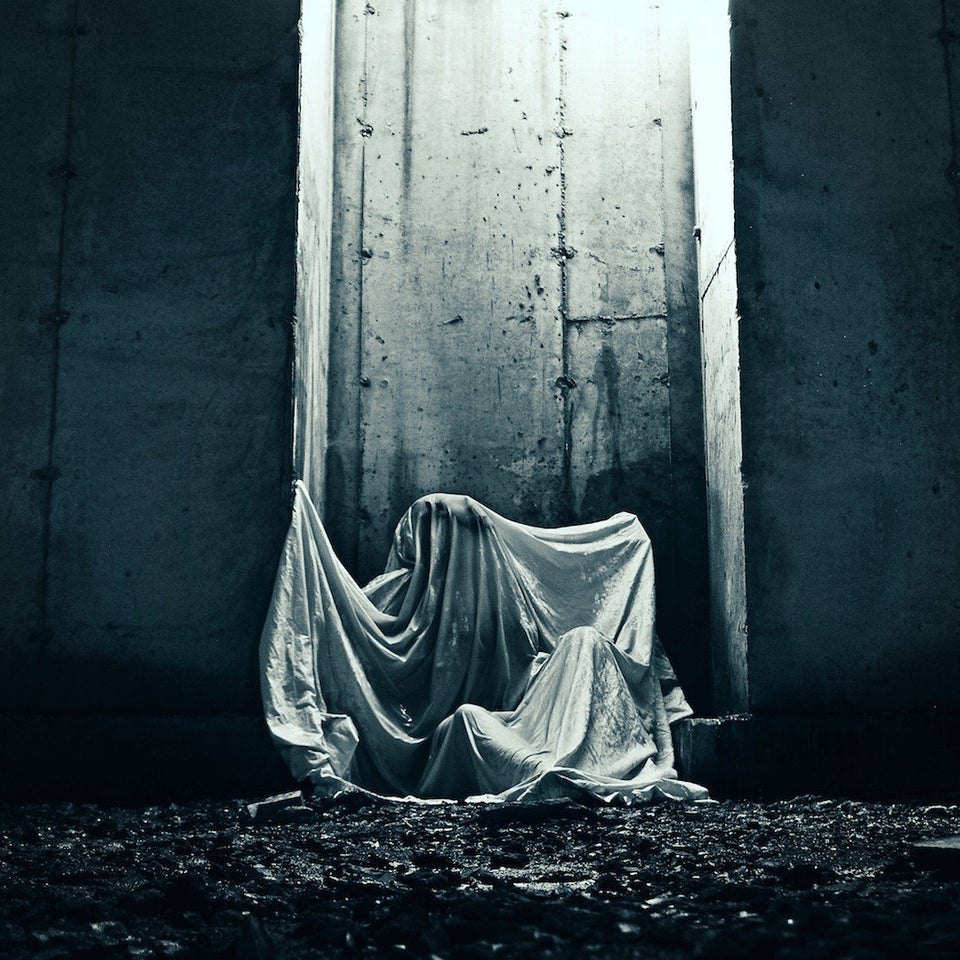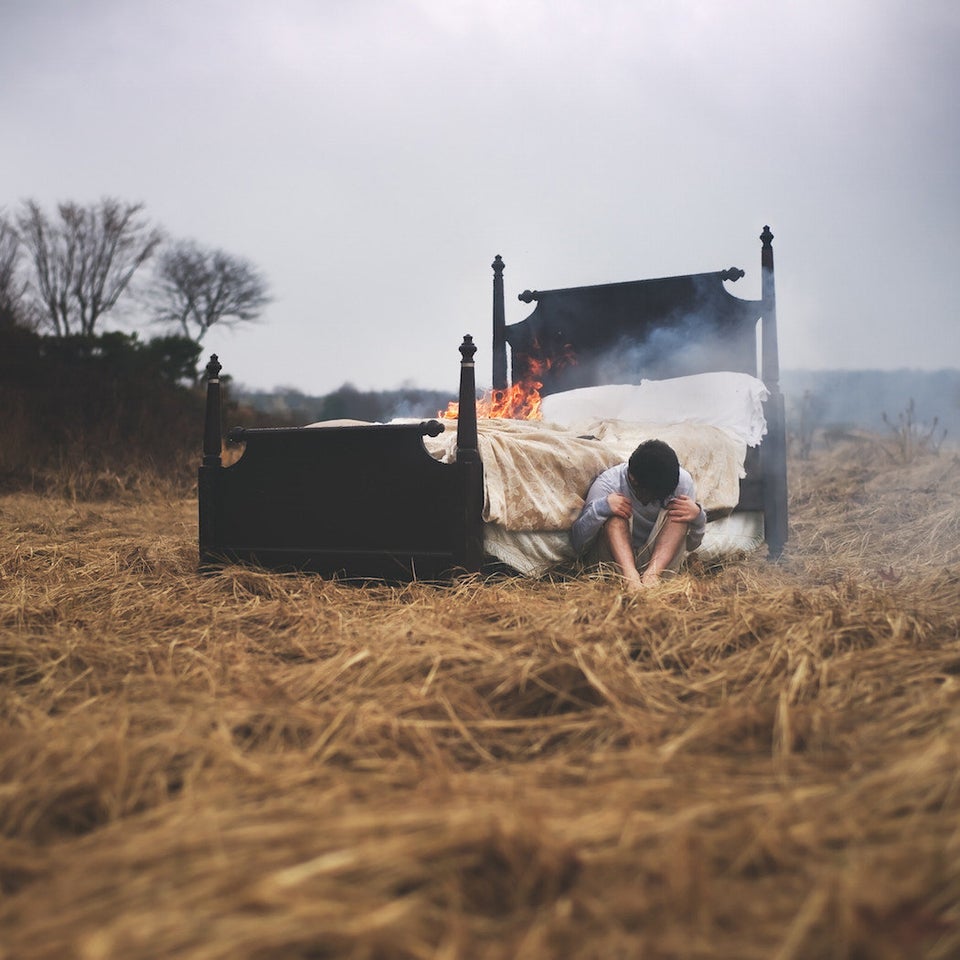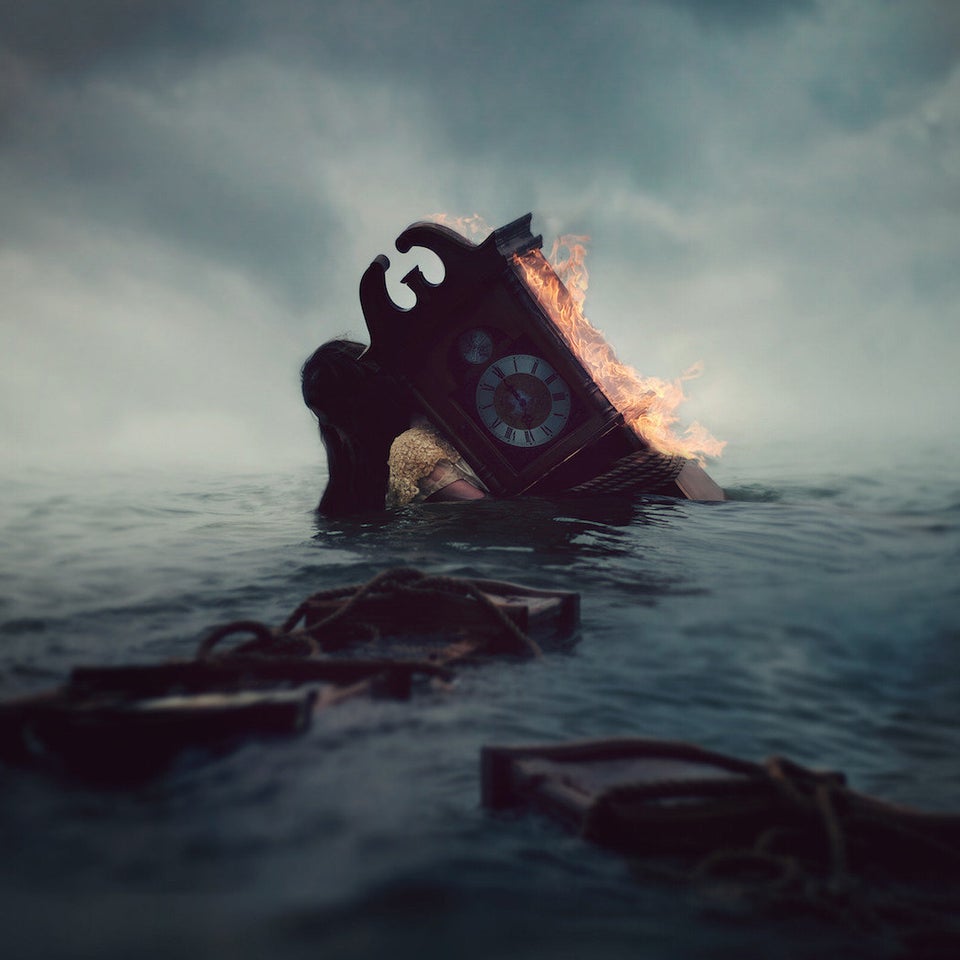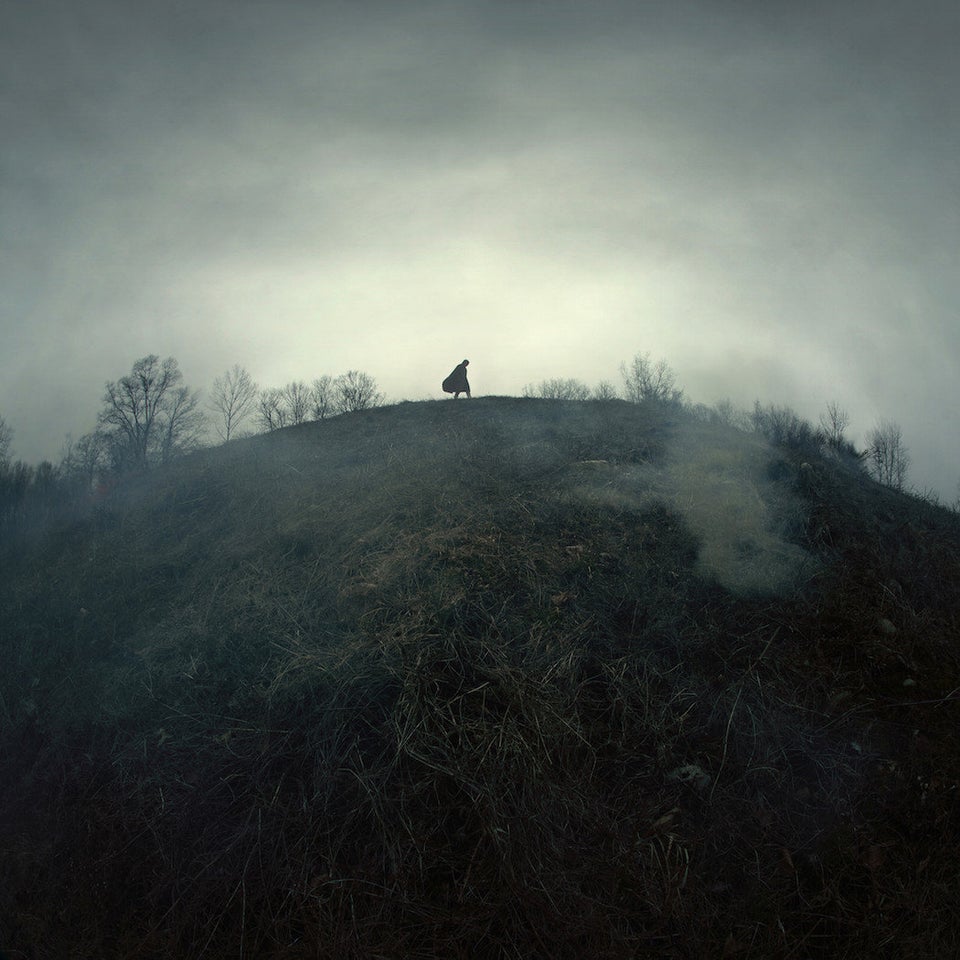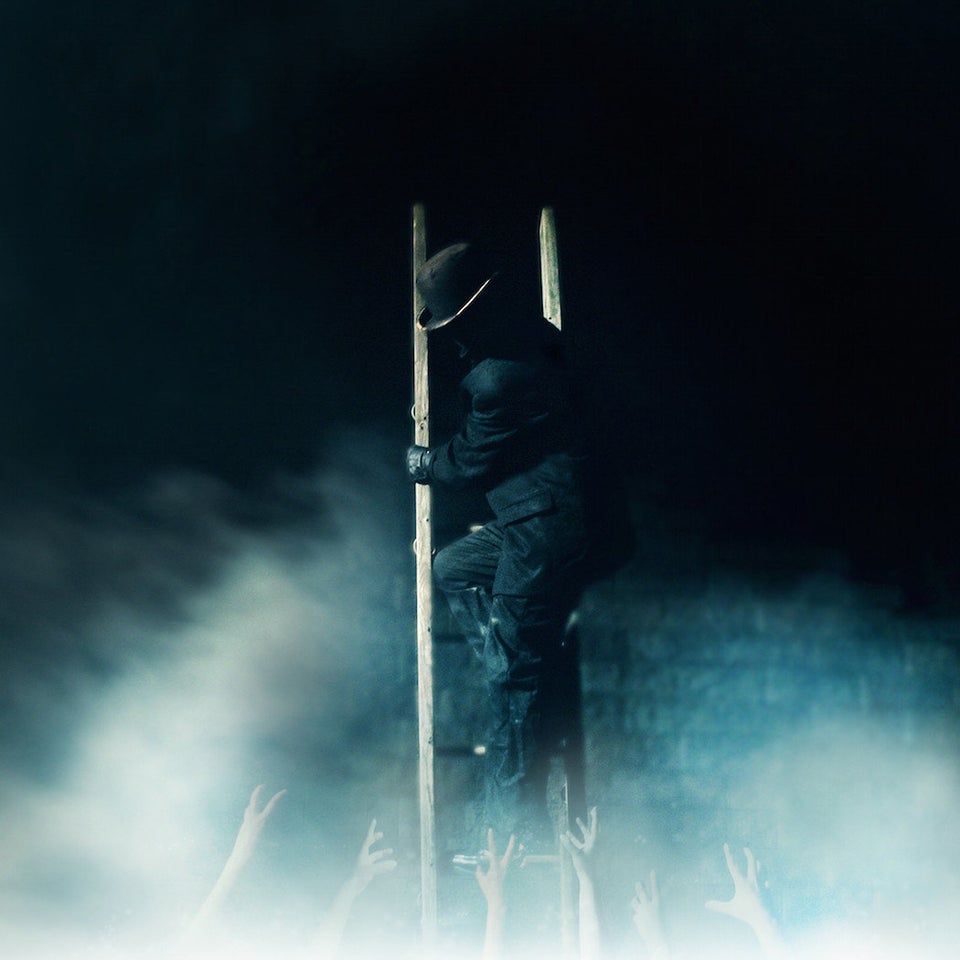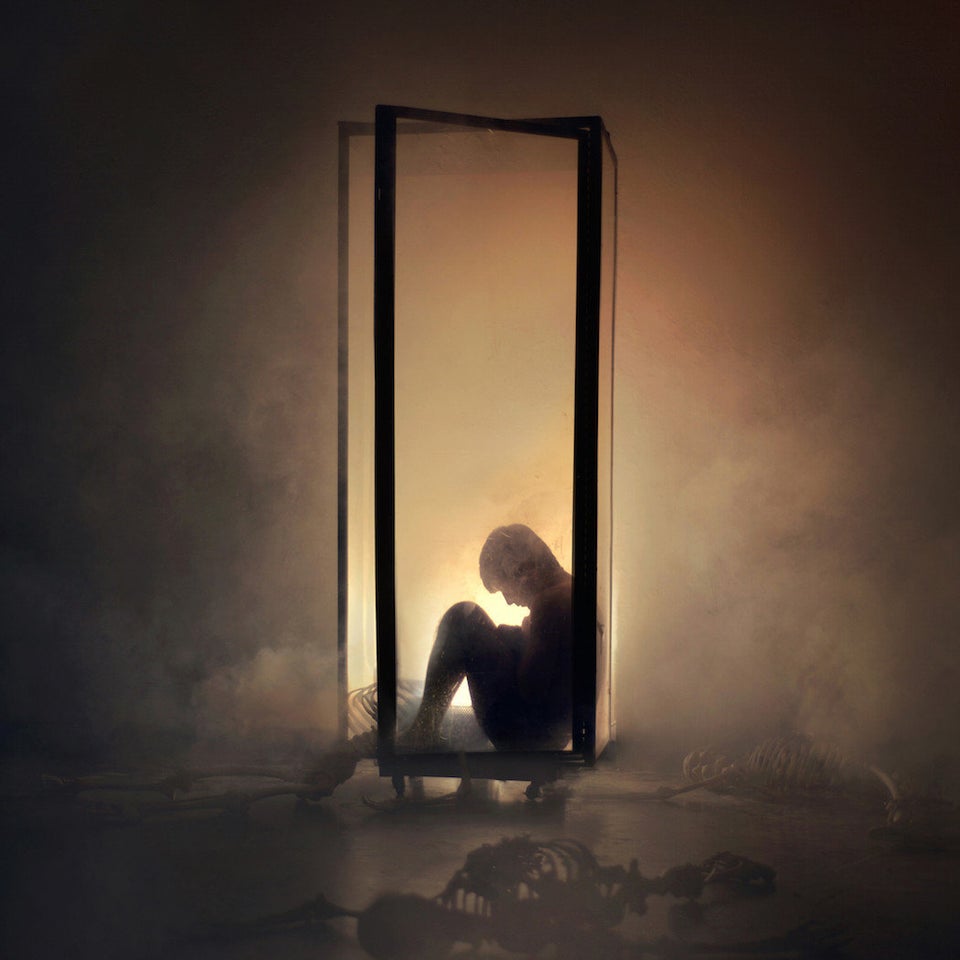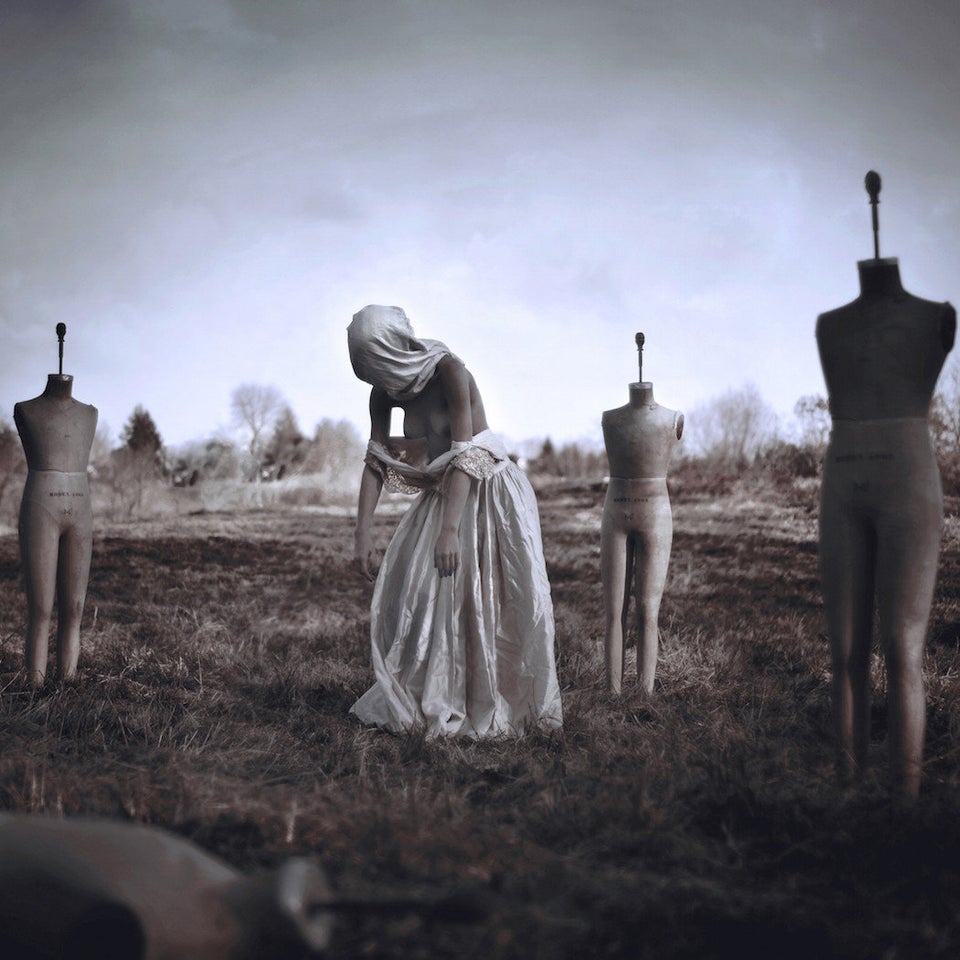
Sleep paralysis may seem like a Surrealist metaphor, but it's a very real health condition that affects roughly 8 percent of the population. It renders people who are on the brink of wakefulness -- either falling asleep or waking up -- temporarily unable to move or react, often while experiencing terrifying and vivid hallucinations.
After struggling with the disorder throughout his life, photographer Nicolas Bruno decided to incorporate it into his work.
"Sleep paralysis is a daunting condition," Bruno told The Huffington Post. "Your conscious mind begins to go into a panic, which induces terrifying visuals that often engage with the sufferer, such as looming dark figures or heavy pressures on one's chest."
Sleep paralysis is a wonky byproduct of healthy brain functionality, suggests science writer Sam Kean, who has authored a book on the quirks of neuroscience. He writes that the condition is related to miscommunication among the three main parts of the brain: the "reptilian" brain that controls basic functions like heart rate, the "mammalian" brain that processes sense and memory, and the "primate" brain, which controls decision-making and complex thought.
While these parts usually work together just fine, communication can get mixed up, causing strange conditions like sleep paralysis. Basically, when your mind "wakes up" during a dream but your body remains physically immobile, it creates a perfect storm for hallucinations. There's a dissociation between the activity of the brain and the physical stillness of REM sleep, one sleep study explains.
The disorder has been linked to traumatic life incidents, anxiety and depression. A 2011 analysis of sleep paralysis research indicates that psychiatric patients with panic disorders are most likely to suffer from the condition.
Doctors have not standardized a treatment for the condition, but some coping strategies include adopting a regular sleep schedule and learning behavioral techniques to stay calm or dissociate yourself from a hallucination.
Bruno said his nighttime hallucinations are closely tied to his emotional state, and that he considered his art project to be like a form of therapy.
"By translating my dream experiences into my artwork, it has lifted my spirits from a darker place than I used to reside in," he said. "Each day that passes, I am able to gain more control over what happens within my episodes."
You can see the whole eerie photo series below, and find more of Bruno's work on his Facebook page.

